The fragrant white flowers of confederate jasmine (
Trachelospermum jasminoides) perfume the air from spring into early summer, while its glossy, dark green foliage provides an attractive backdrop. Whether trained up a trellis or allowed to grow as a ground cover, this jasmine look-alike adds welcome beauty to the landscape.
Confederate jasmine isn’t picky about soil, does well in the heat and can handle cold temperatures as low as 10 degrees Fahrenheit. Gardeners in colder temperatures can grow this plant in a container outside and bring it inside over winter. It can be considered invasive in warm, humid climates and is best used in arid gardens.
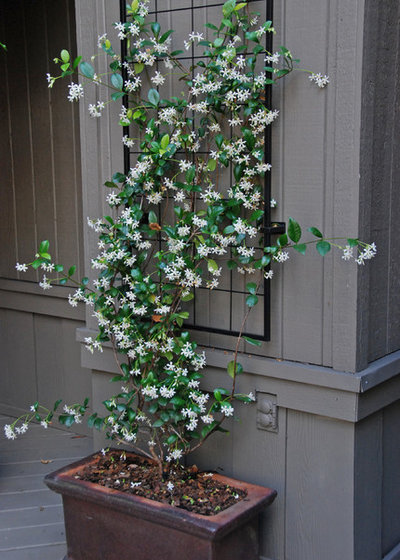
Hortus Oasis
Botanical name: Trachelospermum jasminoidesCommon names: Confederate jasmine, star jasmine, trader’s compass
Origin: Native to eastern Asia, including Japan, Korea, southern China and Vietnam
Where it will grow: Hardy to 10 degrees Fahrenheit, or minus 18 degrees Celsius (USDA Zone 8; find your zone)
Water requirement: Moderate; water deeply every 10 days in summer and twice a month the rest of the year; for inland and low-desert areas, water weekly in summer
Light requirement: Full sun to filtered shade (avoid western exposure); partial shade is best in low-desert zones
Mature size: 1 foot to 2 feet tall and 6 feet wide when grown as a ground cover; 15 to 20 feet tall when grown as a vine
Benefits and tolerances: Somewhat deer-resistant; flowers attract bees
Seasonal interest: Flowers appear in spring and bloom into summer; foliage has a bronze tinge in winter
When to plant: Spring or fall
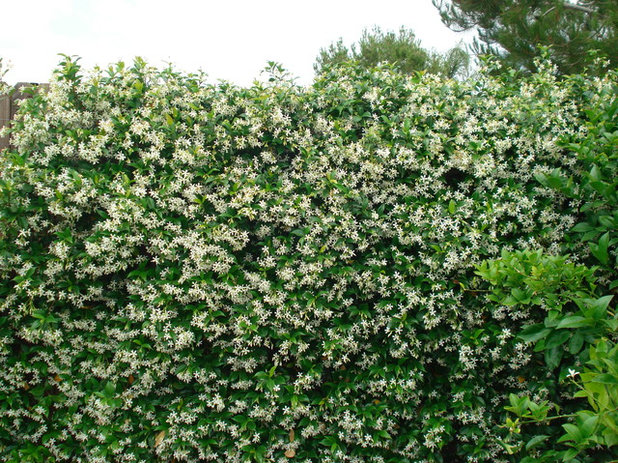
Icos Gardening & Landscape
Distinguishing traits. The attractive dark green foliage provides the perfect backdrop for masses of small white flowers that appear in spring. New growth has a bright green color; later the foliage takes on darker shades of green. When allowed to climb up a trellis, confederate jasmine can grow up to 20 feet tall. It also makes an effective ground cover, as its stems root where they touch the ground.
Confederate jasmine can be aggressive, and care must be taken to maintain it at the desired size. Give it enough room to grow by keeping other plants several feet away. Planting it in containers or in a landscape area confined by concrete will keep it easily within bounds.
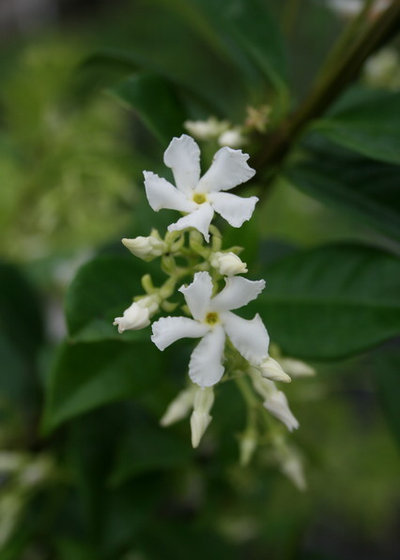
Tulinda's Garden, LLC
The fragrant, 1-inch-wide flowers are borne in clusters and have five petals that slightly turn back at the edges. Flowering begins in late spring and lasts well into summer.
Despite its common name, confederate jasmine is not native to the southeastern U.S., but is, in fact, from southern and eastern areas of Asia, including the Federated Malay States, where its common name comes from.
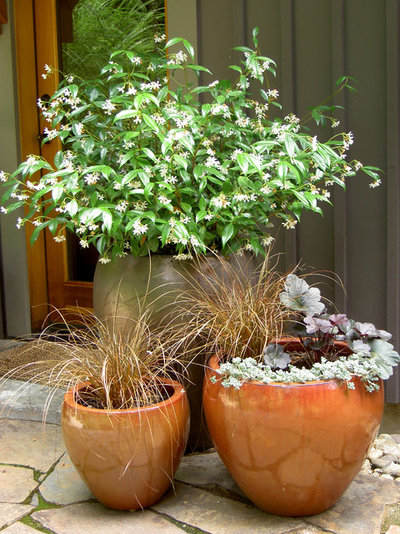
Bliss Garden Design
How to use it. Confederate jasmine is quite versatile in the landscape whether grown as a vine, ground cover or container plant. It can be used in both formal or more free-form landscape settings.
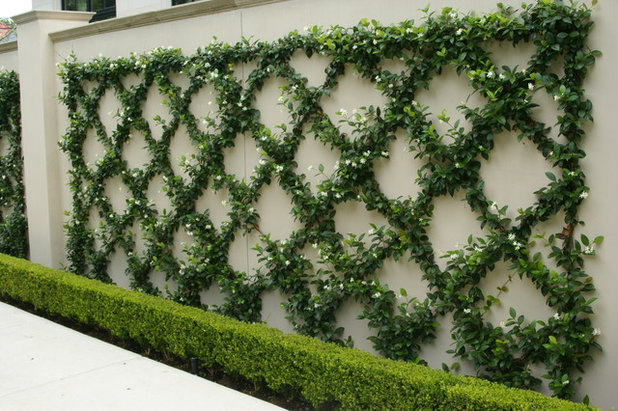
Britton & Associates
For an eye-catching backdrop, train it onto wire arranged in a square or diamond grid. Frequent pruning is required to train and maintain confederate jasmine in this form, but it is a dramatic design element.
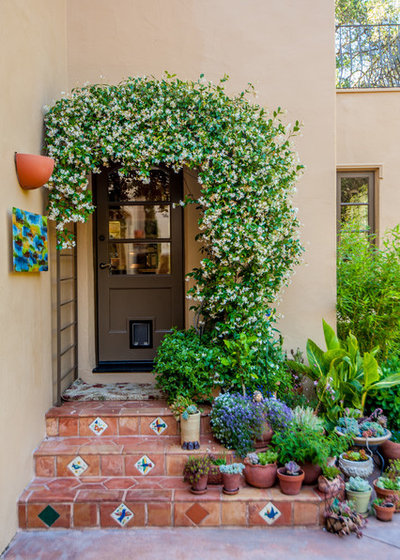
Train this evergreen vine onto a decorative trellis and use it to flank a high-profile entry where visitors can enjoy its fragrant flowers. It can also be trained onto a pergola or an archway or used to screen an unattractive view by training it to climb up a fence.
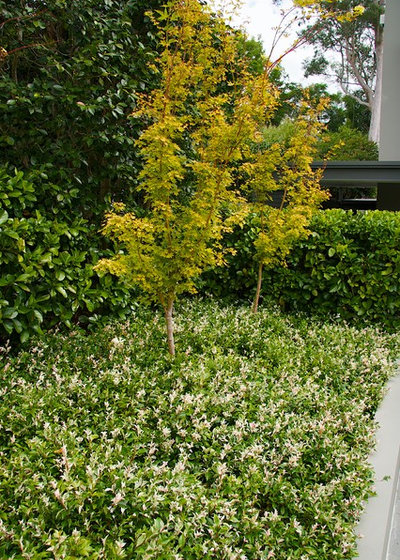
Art in Green
As a ground cover, confederate jasmine adds a lovely dark green element to the garden, providing both visual and literal cooling from hot summer temperatures.
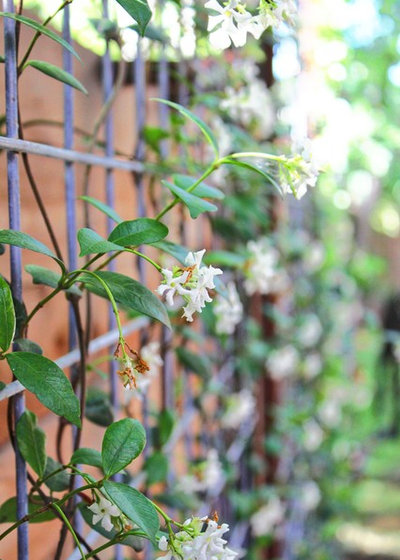
Native Edge Landscape
Planting notes. Confederate vine isn’t picky about soil and grows well in both acidic and alkaline soils. Plant it in full sun or partial shade, avoiding exposures that receive hot afternoon sun. In low-desert gardens, plant it in partial shade. Allow the top 3 inches of soil to dry out before watering. Fertilize in spring and prune in summer, if needed, after flowering has ceased.





